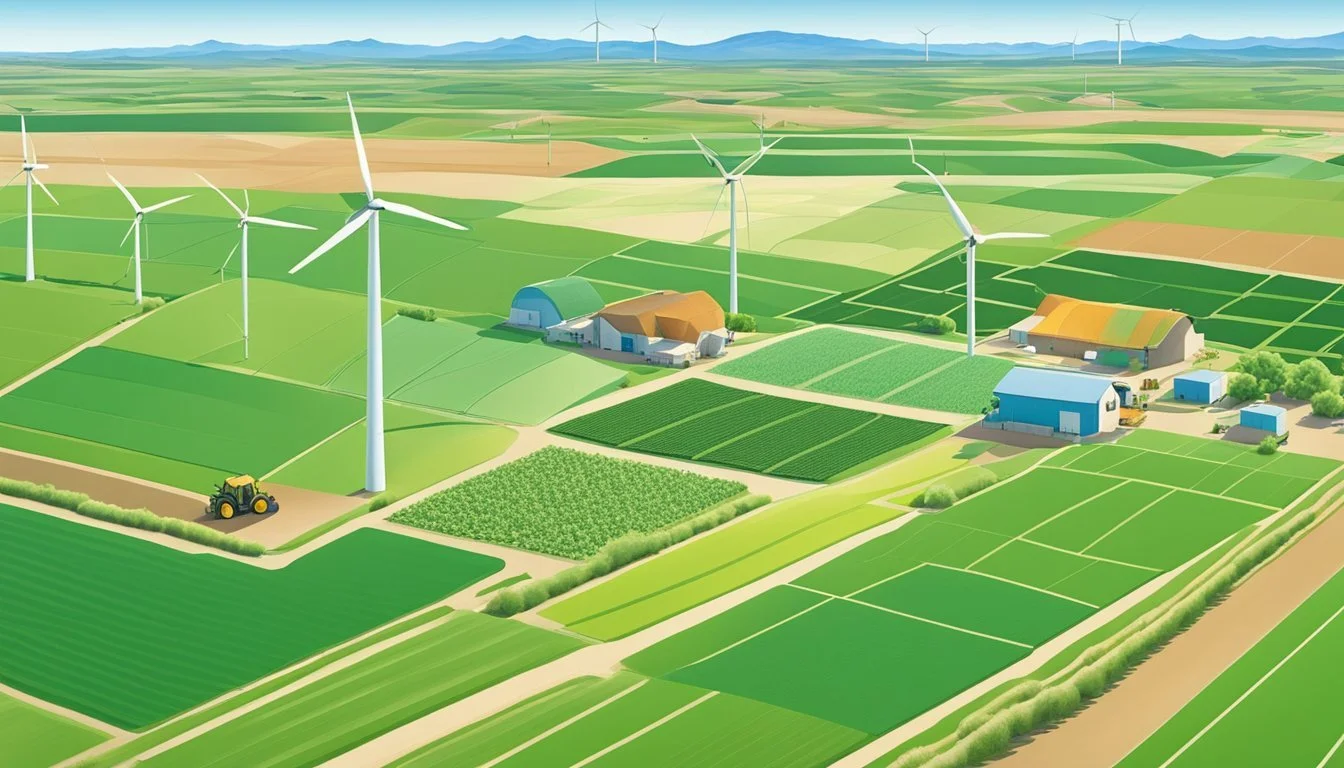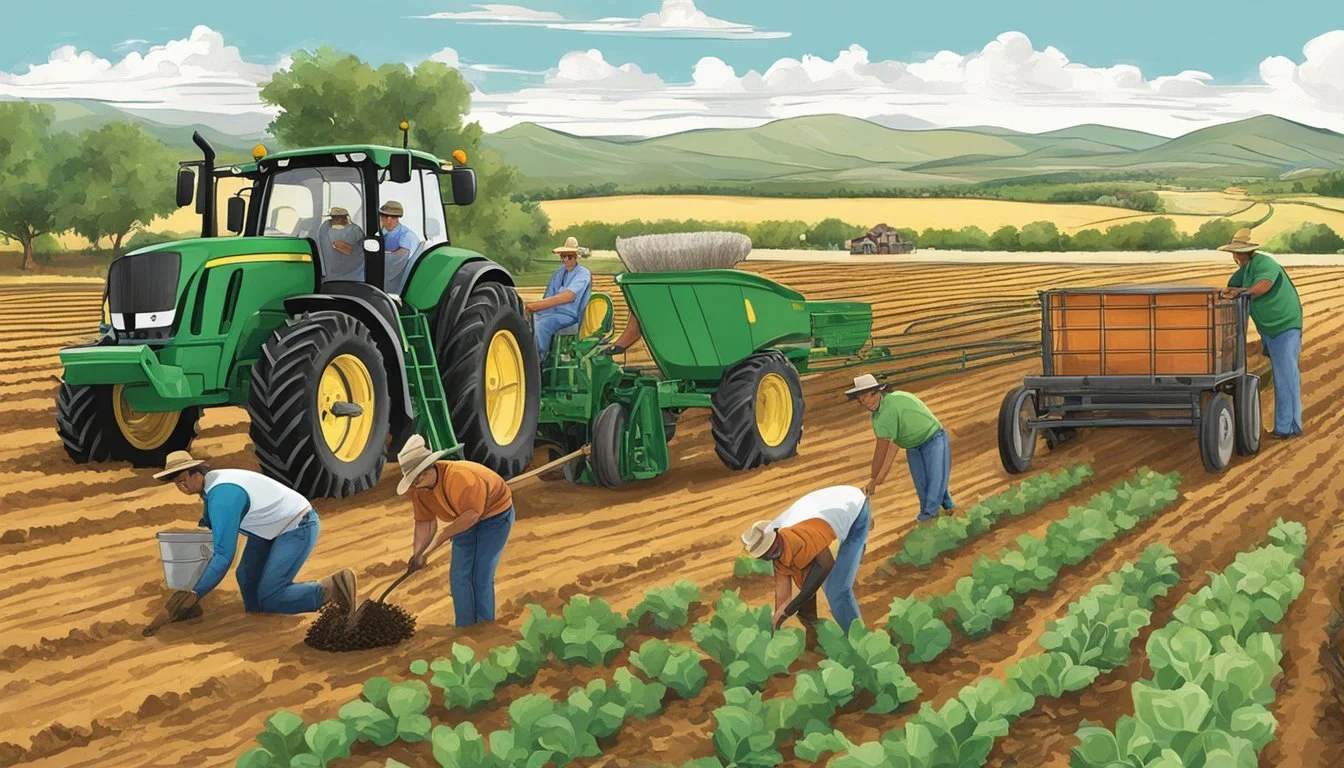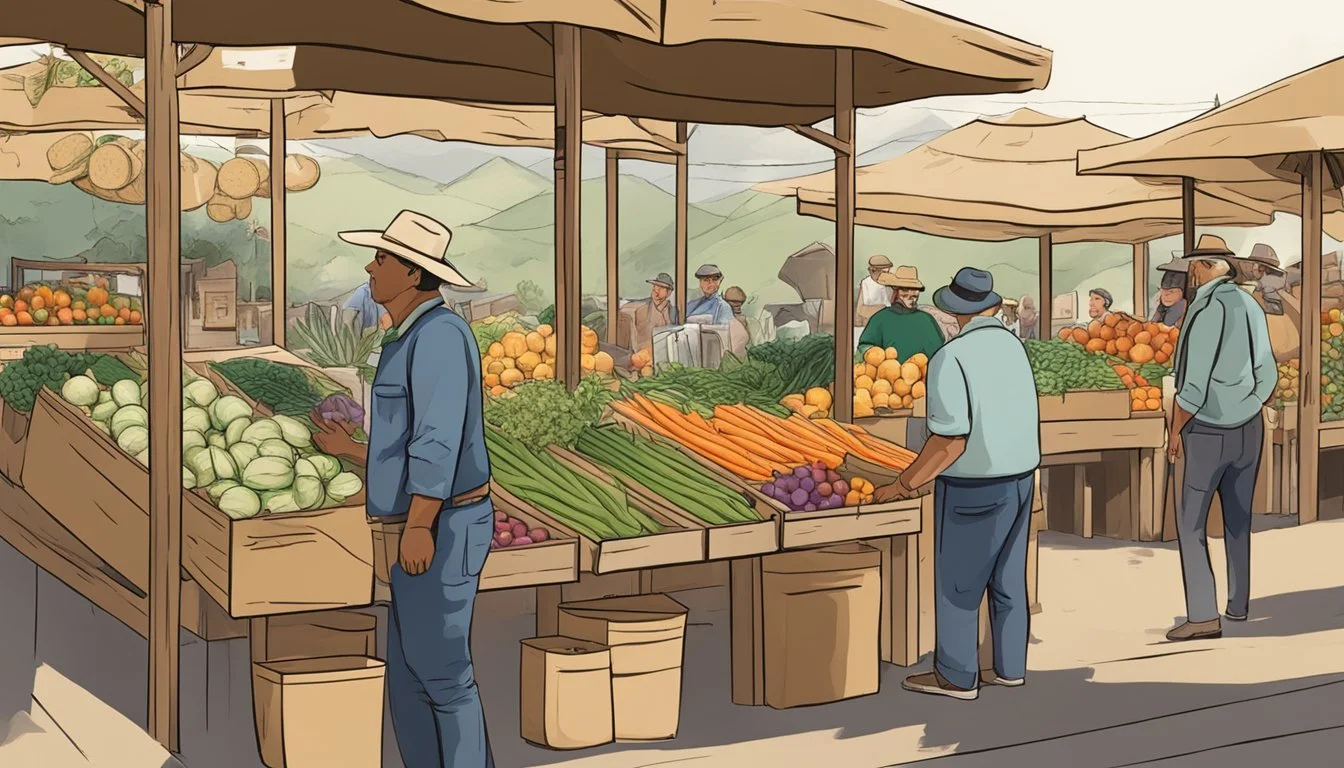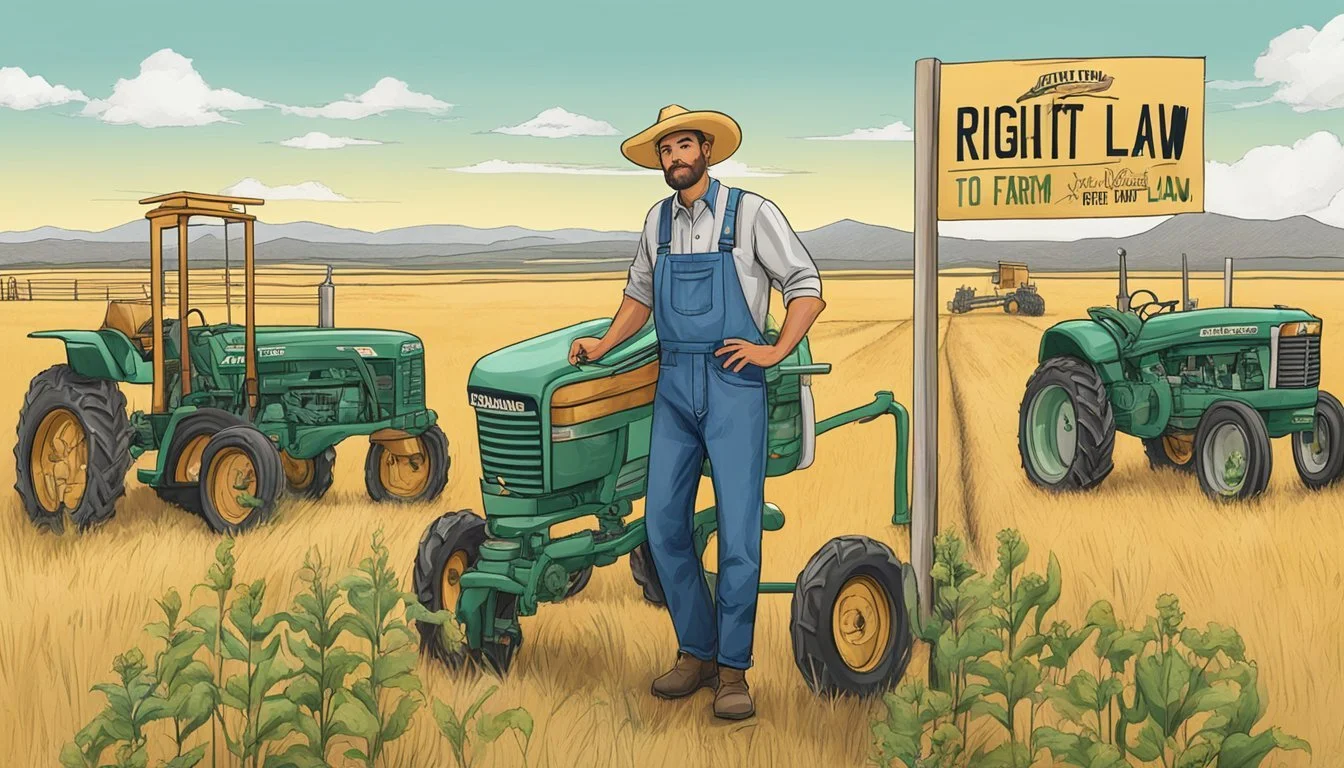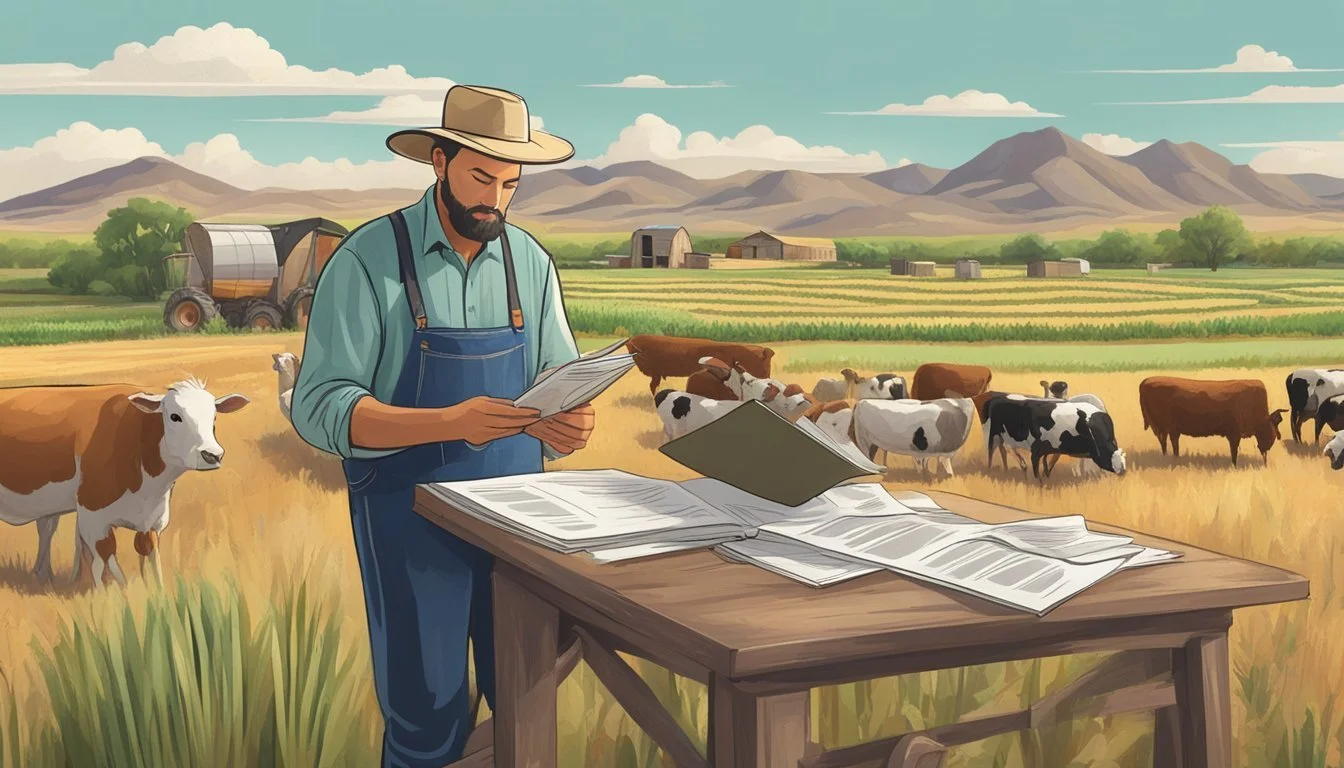Right to Farm Law in New Mexico
Understanding Agricultural Protections
The Right to Farm Law in New Mexico serves as a legislative shield for agricultural operations, protecting them against claims of nuisance. Implemented in 1981, this law addresses the growing concerns of farmers and ranchers who face legal challenges from individuals who may move into rural areas and later object to standard farming practices. New Mexico's legislation recognizes the significance of agriculture to the state's economy and culture, and thus, seeks to preserve farming activities.
Over the years, since its enactment, New Mexico has experienced an increase in the number of farm operations despite a reduction in farmland acreage. The Right to Farm Act is seen by many as a vital component in stabilizing the agricultural community, enabling farmers and ranchers to continue their work with less fear of litigation. It underscores the importance of conserving farming resources and endorses agricultural practices by limiting the conditions under which these can be challenged as nuisances.
The act extends to a broad range of agricultural facilities and processes, ensuring comprehensive protection for the production and processing of crops and livestock. By promoting a stable environment, the law aims to encourage agricultural development and ensure the continued viability of farming in New Mexico. This dedication to safeguarding the interests of those within the agricultural sector is a testament to the state's commitment to its rural heritage and economic future.
New Mexico Right to Farm Act Overview
The Right to Farm Act in New Mexico serves as a protective measure for agricultural operations within the state, upholding the view that such activities should not be deemed nuisances if they are in compliance with existing laws and regulations. The Act was initially enacted in 1981 to support the agricultural community by mitigating conflicts with non-farming land uses.
Key Statutes and Provisions:
Section 47-9-3: Recognizes agricultural operations as non-nuisances when lawful
Section 47-9-5: Defines relevant terms like "agricultural facility" and "agricultural operation"
Section 47-9-7: Discourages frivolous lawsuits against farming practices
The Act emphasizes that agricultural activities such as soil preparation, planting, growing, harvesting, and application of chemicals for crop production are integral to lawful farming and should not be subjected to nuisance-based lawsuits. This legal framework not only facilitates the growth and protection of New Mexico's farming industry but also helps ensure that farmers and ranchers can continue their operations without undue interference.
Moreover, state laws have been amended to strengthen this Act, underlining New Mexico's commitment to safeguarding its agricultural heritage. For instance, Senate Bill 72, signed into law by Governor Martinez, was a significant amendment geared towards reinforcing the protections afforded to farmers and ranchers.
Through the New Mexico Right to Farm Act, the state aims to strike a balance between the advancement of urban development and the preservation of its vital agricultural operations, thereby maintaining the state's rich farming legacy for future generations.
Defining Agricultural Operations
This section meticulously outlines the components that comprise agricultural operations in New Mexico, illustrating the scope and scale of activities classified under this sector.
Farmland and Farms
In New Mexico, agricultural operation encompasses a broad array of activities conducted on farmlands and farms. Farmland refers to the designated parcels of land used for agricultural purposes, typically involving the cultivation of soil for the production of crops. This includes both the land itself and the resources tied to it, such as water rights and access to grazing. The term farms denotes the actual agricultural business or enterprise that operates on this land. These entities are instrumental in maintaining New Mexico's agricultural productivity and are acknowledged as the fundamental units of rural landscape and economy.
Crops and Livestock
Crops and livestock represent two primary elements within an agricultural operation. Crops include a range of plantations for human consumption, animal feed, or industrial use. Crop production requires adherence to systematic planting, harvesting, and distribution processes. Livestock includes but is not limited to cattle, dairy cows, swine, sheep, goats, and poultry. These animals are raised for their meat, milk, eggs, or other products and may also contribute to farm operations through labor or breeding.
Equipment and Buildings
The definition of agricultural operations would be incomplete without recognizing the integral roles of equipment and buildings. Machinery such as tractors, plows, harvesters, and irrigation systems are essential for the efficient and timely management of farm labor. Buildings and structures on a farm include barns, sheds, silos, and processing facilities. They serve as storage, housing for livestock, and locations for processing agricultural products, thereby underscoring their critical function in sustaining farm viability and protecting assets from environmental factors.
Legal Protections under the Act
New Mexico's Right to Farm Act provides a framework designed to protect agricultural producers from nuisance lawsuits, clarify the status of qualified farmers, and outline the scope of protections afforded by the law. The Act supports the continued viability of agricultural operations by offering legal certainty for farmers.
Nuisance Lawsuits Prevention
The Act deems agricultural operations not a nuisance if they have lawfully been in operation for one year or more and if they comply with applicable laws and regulations. This statutory protection is crucial as it safeguards farmers from lawsuits that could arise from the normal day-to-day operations of their farms. These provisions are intended to maintain the agricultural landscape of New Mexico by preventing new residents from successfully suing farmers over established agricultural practices.
Qualified Farmer Status
For protections under the Right to Farm Act to apply, individuals or entities must meet certain criteria to be considered "qualified farmers." These include engaging in farming for at least one year and conforming to generally accepted agricultural practices. Qualifying farmers gain assurance that their rights to farm are recognized and that they have a defense against potential nuisance claims.
Limits of Protection
While the Right to Farm Act offers significant safeguards, there are limits to these protections. The Act does not shield operations that are negligent or that do not comply with health, safety, and environmental regulations. Additionally, it does not protect against nuisances that existed before the start of farming operations. These limitations are in place to balance the interests of agriculture with those of the public and the environment.
Agricultural Practices and Technologies
In New Mexico, agricultural practices and technologies span from time-tested methods to cutting-edge innovations, each playing a critical role in the state's farming success. They incorporate practices that ensure the commercial production and processing of various agricultural products are efficient and sustainable.
Traditional Farming Methods
Traditional farming methods in New Mexico have been shaped by the state's unique climate and cultural heritage. Farmers rely on these methods for the production and processing of crops, livestock, and products like honey. Crop rotation and selective breeding are common practices aimed at maintaining soil health and enhancing livestock quality. While honey bees are indispensable for pollination, farmers also employ natural pest control methods to protect them and minimize pesticide use.
Practices: Crop rotation, selective breeding
Processes: Natural pest control to protect pollinates like honey bees
Technology: Minimal reliance on heavy machinery
Innovative Agricultural Technologies
The state has also embraced innovative agricultural technologies to improve efficiency and output. Precision agriculture uses data and GPS technology to ensure optimal plant growth and resource management, maximizing yield while reducing waste. Advances in breeding technologies have also allowed for the development of crops and livestock that are more resilient to the local environment. Automated systems for irrigation and feeding, along with drones for crop monitoring, represent significant technological strides in modernizing New Mexico's agricultural practices.
Practices: Precision agriculture, data-driven resource management
Processes: Automated irrigation and feeding systems, drone monitoring
Technology: GPS technology, breeding innovations
The Right to Farm and Community Relations
The Right to Farm laws in New Mexico affect both the dynamics of rural and residential life and shape public perception of the agricultural sector.
Rural and Residential Dynamics
In New Mexico, Right to Farm (RTF) laws play a pivotal role in defining the relationships between ranchers and their residential neighbors. These laws typically serve to protect agricultural operations in rural areas from nuisance suits, particularly when normal farm operations affect surrounding landowners through noise, odor, or other disruptions. For example, ranchers operating a legal agricultural facility such as livestock pens or machinery are shielded from certain complaints that could arise from the proximity of residential properties.
Public Perception and Support
The support for Right to Farm laws amongst New Mexicans is grounded in the recognition of agriculture as a significant contributor to the state's economy and culture. However, the extent of this support can vary based on individual experiences with agriculture and understanding of the legislation. While ranchers and those with a direct connection to rural life may view these laws as critical for the livelihood and sustainability of farming, residents affected by farm operations might have concerns about environmental impacts or property rights. The laws act as a balance, aiming to preserve the rights and interests of both agricultural and non-agricultural community members.
Production Activities of Right to Farm
Right to Farm laws in New Mexico encompass a range of agricultural activities. These laws protect the rights of farmers engaged in various aspects of food production, from the growth of crops to the breeding of animals and the processing of food products.
Crop Cultivation and Harvest
Under Right to Farm protections, farmers can engage in the full cycle of crop production, which includes preparing soil, planting seeds, irrigating fields, and applying fertilizers and pesticides to ensure crop health. Harvesting procedures are also covered, allowing farmers to utilize both traditional and advanced methods to collect crops at their peak maturity for consumer consumption or further processing.
Animal Husbandry and Breeding
Livestock operations are a significant part of New Mexico's agricultural landscape. Activities protected by Right to Farm laws include breeding and hatching, with a focus on maintaining genetic diversity and healthy populations. Feeding practices are also crucial, and farmers adhere to nutritional guidelines to raise robust livestock. Critically, the laws safeguard the necessary but often contested activities like slaughtering and processing for meat production, ensuring they can be conducted without undue interference when following regulations.
Food Processing and Manufacturing
Once raw agricultural products are obtained, the processing and manufacturing stages turn these items into a variety of food products ready for the market. Right to Farm laws support facilities that handle the transformation of raw crops and livestock into consumable goods, inclusive of the application of new technologies, which allow for more efficient and safe production methodologies. This includes packaging and preparing products like honey, dairy, and meats, among others.
Marketing and Sales under Right to Farm
New Mexico's Right to Farm laws facilitate agricultural operations by providing guidelines that influence marketing and sales. These laws ensure that farmers can conduct sales and marketing activities essential for the sustainability of their businesses and local food systems.
Roadside Markets and Direct Sales
In New Mexico, roadside markets serve as pivotal points for direct sales, allowing producers to sell their products directly to consumers without intermediaries. These markets are vital for small to medium-sized producers, giving them the freedom to market fresh produce and value-added products directly from the farm. Customers benefit from purchasing locally-grown food and often appreciate the transparency and connection to the land that these markets foster. The Right to Farm legislation supports this direct-to-consumer model by protecting agricultural activities that might otherwise be challenged in increasingly urbanized areas.
Commercial Production
Commercial production encompasses a broad range of agricultural activities including, but not limited to, the cultivation of crops and livestock. Under Right to Farm laws, commercial producers are shielded from nuisance lawsuits that could arise from the normal operations of their businesses, such as the generation of noise, odors, dust, or the application of feed and fertilizers. This protection is particularly important as it allows commercial operations to focus on efficient production and distribution practices without the constant threat of legal challenges stemming from urban encroachment. It acknowledges the inherent nature of agricultural work and the importance of these activities to the state's economy and food security.
Challenges and Limitations
In New Mexico, the Right to Farm Law faces several challenges and limitations that can impact farmers and the surrounding communities. These include environmental concerns and the balancing act of pesticide regulations, as well as the tension between supporting agricultural practices and addressing nuisance claims and frivolous lawsuits.
Environmental and Pesticide Regulations
New Mexico's Right to Farm Law supports agricultural activities but must be reconciled with environmental protections. Regulations concerning pesticide use and environmental conservation can limit farm practices. Farmers are required to comply with state and federal environmental laws, which may include restrictions on pesticide application to protect water quality and public health. Noncompliance can not only lead to legal consequences, but also to tensions with neighboring communities affected by these farming practices.
Nuisance Claims and Frivolous Lawsuits
The Right to Farm Law provides protection against nuisance claims, aiming to support the continuity of agricultural operations. However, a challenge arises when neighboring property owners perceive farming activities as a nuisance, leading to potential lawsuits. While the law intends to shield farmers, it also must ensure that legitimate concerns of residents are addressed fairly. An increase in frivolous lawsuits can burden the judicial system and the farming community, complicating the relationship between farmers and urban newcomers.
Statutes and Official Documentation
The statutes governing the Right to Farm in New Mexico are comprehensive legal frameworks designed to protect agricultural operations. These statutes provide clarity and support for farmers, addressing issues related to nuisance claims and the establishment of agriculture in the state.
New Mexico Statutes
Section 47-9-1: Titled as the Right to Farm Act, sets the short title for the legislation.
Section 47-9-2: Explains the purpose of the act, which is to conserve, protect, and encourage the development and improvement of its agricultural land for the production of food and other agricultural products.
Section 47-9-3: States that agricultural operations are not deemed a nuisance if they comply with federal, state, and local laws and regulations, and if they are in operation for more than one year.
Section 47-9-4: Details on contracts and agreements that may be affected by this act are provided.
Section 47-9-5: Provides definitions for terms used throughout the act, such as "agricultural facility" and "agricultural operation."
Section 47-9-6: Covers potential damages and the calculation thereof in nuisance actions.
Section 47-9-7: Addresses cases deemed to be frivolous lawsuits and the actions that might be taken in such instances.
Agricultural Law Resources
Official Sources: Resources for New Mexico's agricultural law can be accessed through the state's legislative website (nmlegis.gov), which provides authentic and updated documentation regarding the Right to Farm Act.
Resources:
The New Mexico Department of Agriculture (NMDA) provides resources and guidance regarding compliance with agricultural laws.
Legal databases such as Justia Law offer access to statute texts and interpretations.
One Rural and other agri-focused organizations provide summaries and analyses that help stakeholders understand the implications of the Right to Farm laws.
It is crucial for individuals and entities involved in agriculture to refer to the official state resources and reputable legal databases to obtain current information and legal guidance related to the Right to Farm Act.
Educational Resources and Research
In exploring the framework of New Mexico's Right to Farm laws, educational resources provide in-depth analyses while research offers empirical evidence to guide understanding and applications of the statutory language.
Academic Studies and Charts
Researchers in fields such as environmental law and agriculture policy have conducted comprehensive studies resulting in robust charts and data compilations. These studies often scrutinize changes in farm operations sizes, land usage, and the economics of agriculture within the state. Specific charts might illustrate trends such as the 83 percent increase in the number of farm operations juxtaposed with a 15 percent decrease in farmland acreage, offering visual clarity to complex data.
Extension Services and Outreach Programs
Extension services operate with a mandate to disseminate practical research findings to the agricultural community. Outreach programs, informed by academic and field research, provide farmers, legislators, and the general public with guidance on the implications of the Right to Farm Act. Teams of specialists focus on the practical application of statutory language, distilling down legal jargon into clear terms for farmers and stakeholders. These services may include workshops, informational pamphlets, and direct consultancy to ensure knowledge transfer that can be readily applied to current agricultural practices.




